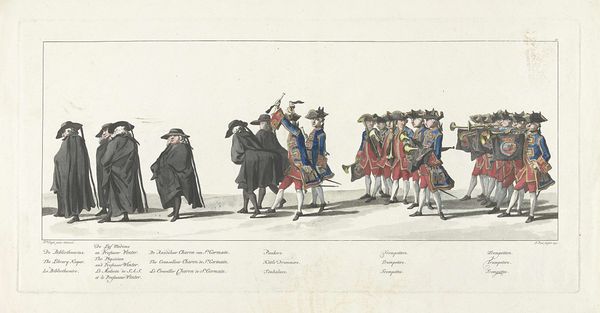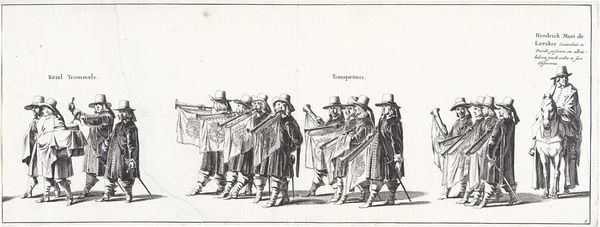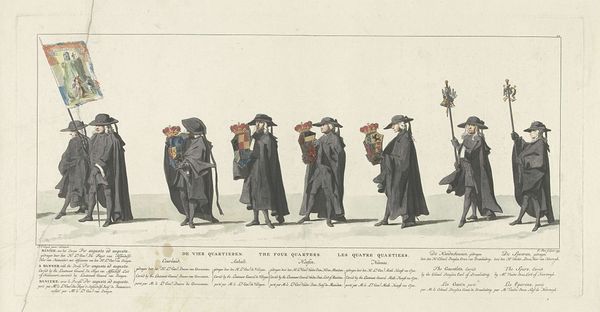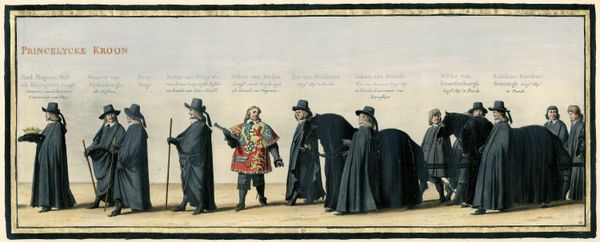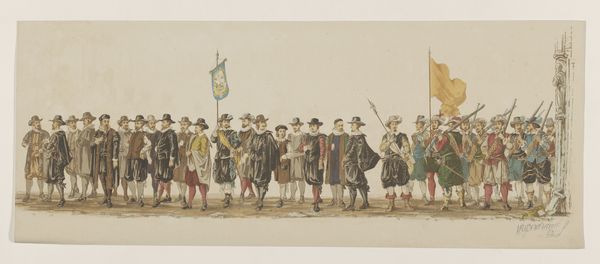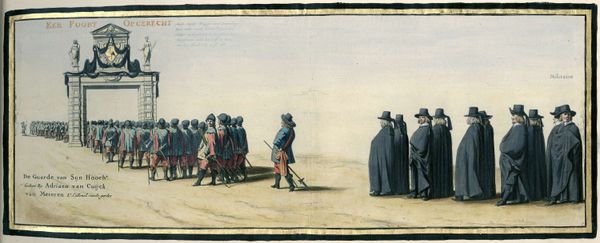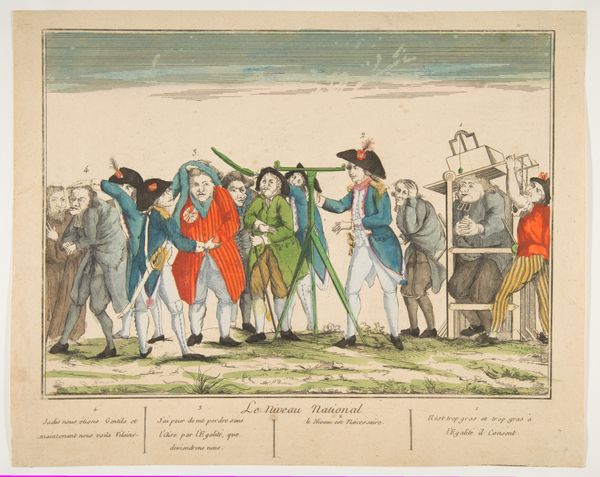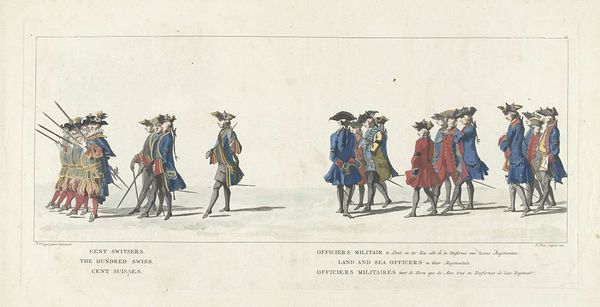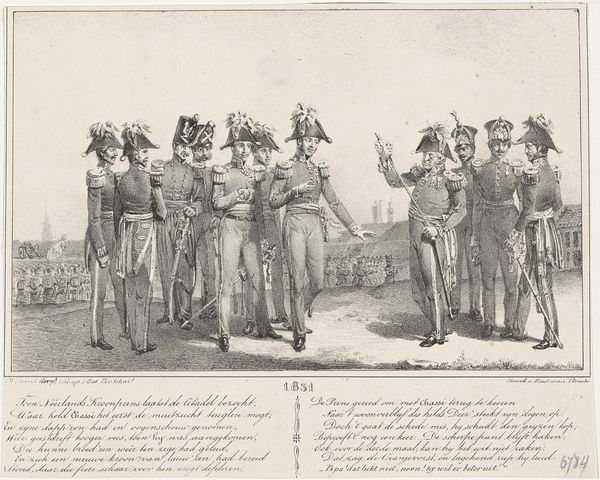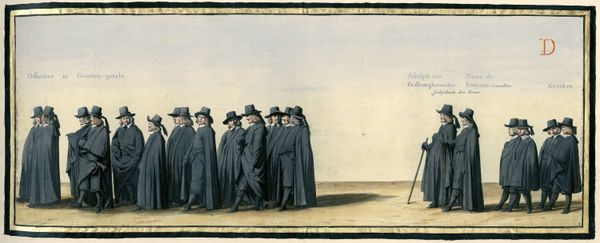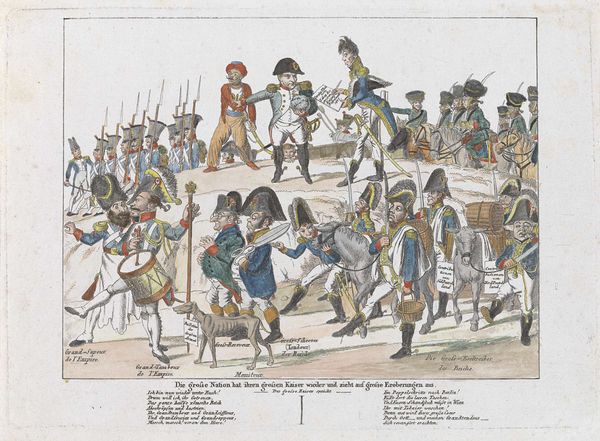
print, engraving
#
portrait
#
baroque
#
dutch-golden-age
# print
#
figuration
#
line
#
history-painting
#
engraving
Dimensions: height 225 mm, width 565 mm
Copyright: Rijks Museum: Open Domain
Curator: This engraving by Pieter Nolpe, created in 1651, captures a specific scene from "The Funeral Procession of Frederik Hendrik, Plate no. 9". It’s quite a sight, wouldn't you agree? Editor: A somber but rather magnificent parade! The precision of the lines and the deliberate ordering of figures evoke a powerful sense of ceremony and formality. Almost as though we were there witnessing history. Curator: Indeed. Look at how Nolpe uses the repetitive form of the figures—the soldiers, trumpeters, and banners—to construct rhythm. Notice how the texture of each material and subtle modulations in color and shade differentiate one distinct block of uniformed attendants from another. Editor: For me, the enduring image is that of the trumpet banners adorned with heraldic symbols— they are statements of power, tradition and family pride. These are visible articulations of Dutch identity and sovereignty, especially resonant in the historical context. Curator: Precisely. Consider the spatial relationships within the artwork. How Nolpe creates a distinct separation between the sections of parading figures. Also, note how he emphasizes the clarity and articulation of line and form instead of focusing on depth of field or realism, a classic strategy from the Baroque tradition. Editor: But look beyond the linear formations, into the solemn pageantry: the symbolic meaning of a funeral procession as public grief, a collective experience transformed into something tangible through dress and displayed objects—here are visual tools that knit a culture together and speak volumes about Dutch values of the period. Curator: You are absolutely correct to point that out. The artist manages to capture the very essence of formal order and understated majesty through his sophisticated arrangement of forms, lines and color choices. Editor: The image becomes, in its own way, a funerary rite itself, designed for those living in the future as a means for reflecting on historical values, tradition, power, and communal spirit. Curator: Absolutely. Its compelling compositional design elements enable us to engage deeply with Dutch Golden Age aesthetics and ideologies. Editor: A remarkable meditation on passing time, filtered through carefully deployed emblems, to produce enduring cultural relevance.
Comments
No comments
Be the first to comment and join the conversation on the ultimate creative platform.
